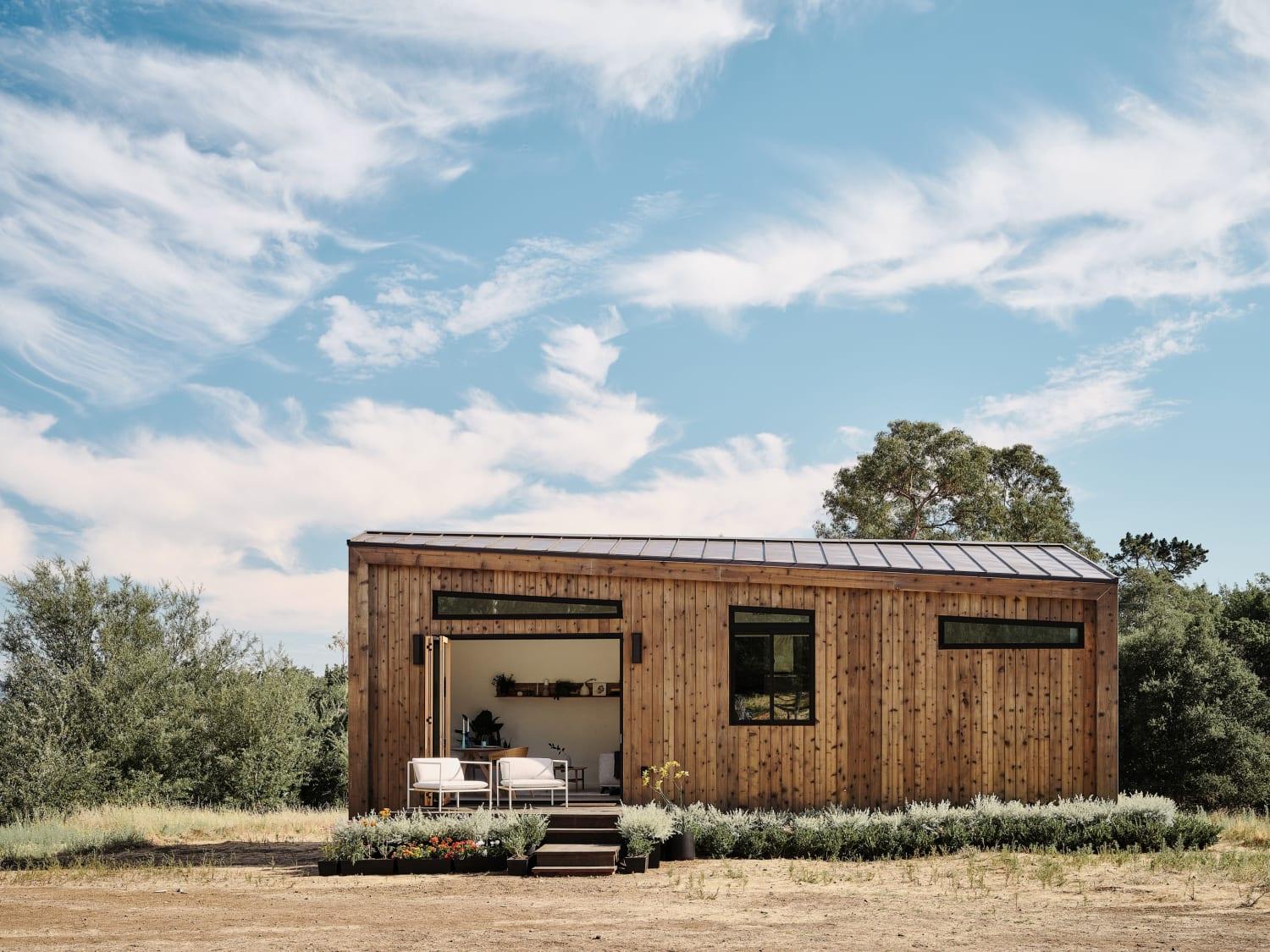What Qualifies as an ADU in California
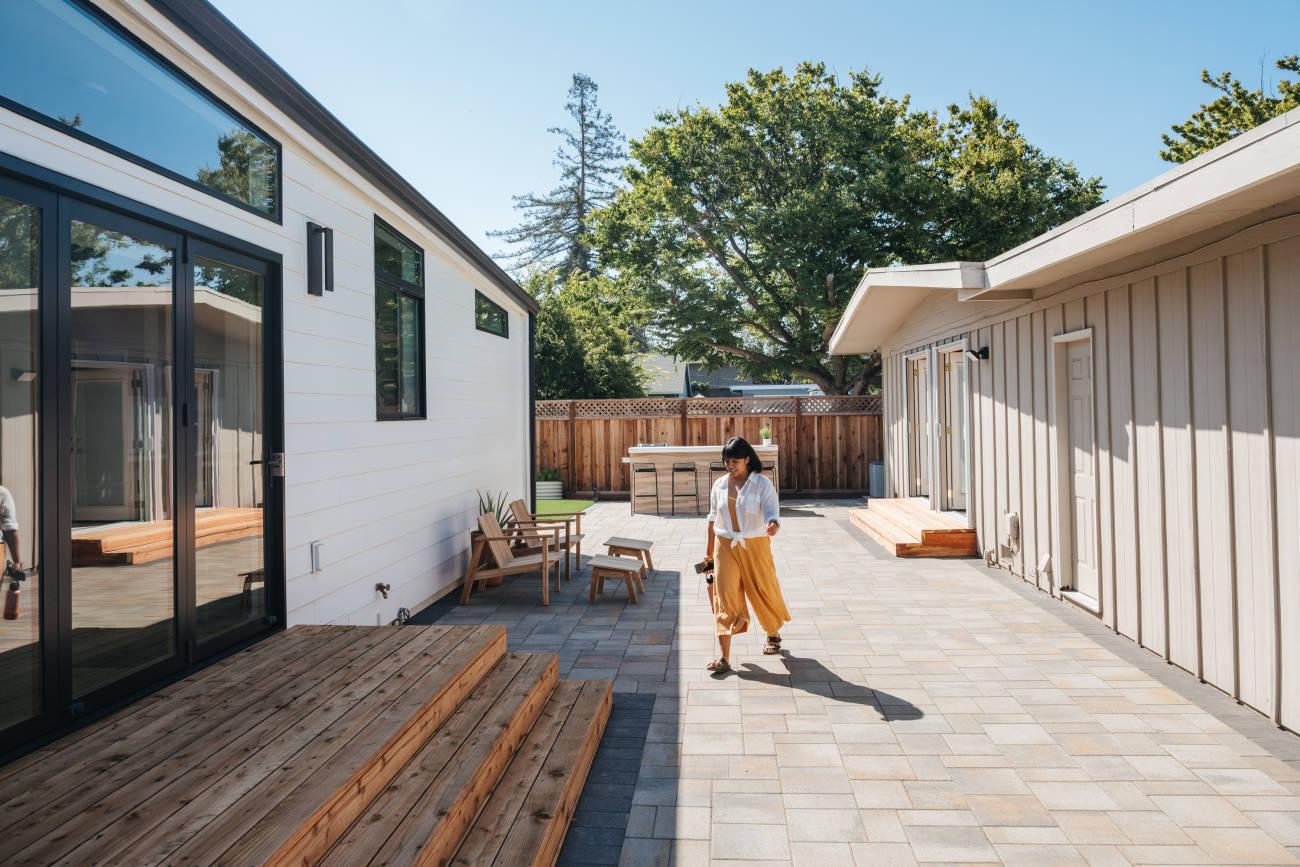
A homeowner walks out to her Abodu One ADU that sits behind the main home in the backyard.
Abodu
An accessory dwelling unit, or ADU, is a separate living area on a property with a proposed or existing primary residence. ADUs, sometimes called granny flats or backyard cottages, are cost-effective housing options because homeowners can create new living spaces without buying property. Accessory dwelling units maximize space and expand housing options in existing neighborhoods.
An ADU is a versatile space that can be used as a home office, a guest house for family members to live or stay when they visit, or a rental property to earn passive income. California has relaxed ADU laws and streamlined the permit approval process to encourage building ADUs and creating more affordable housing.
ADU vs. JADU
ADUs and junior accessory dwelling units (JADUs) are separate living spaces that fit into all kinds of neighborhoods, from suburban communities to city centers. There are a few types of ADUs, including detached, attached, and ADU conversions.
Detached ADUs are stand-alone units on the same lot as a proposed or existing primary dwelling. Attached ADUs connect to the main house and are generally added to the side or back of the house. Conversion ADUs, like garage conversions, involve transforming an existing space into a residence.
Unless there is a local ordinance that states otherwise, ADUs can be up to 1,200 square feet or 50% of the main home’s living area and must have their own kitchen and bathroom facilities. Depending on local regulations, ADUs may or may not need to include a parking spot.
Junior ADUs can be no more than 500 square feet and are allowed within the walls of a proposed or existing single-family residence. JADUs require an entrance separate from the main house and owner-occupancy of either the primary home or JADU. Junior ADUs do not need to include a parking space.
For fee purposes, JADUs are not considered new or separate housing, meaning no providers, including non-municipal providers, can charge fees for providing water, sewage, or power.
What’s the difference between an addition and an ADU in California?
Additions and ADUs add livable space to a property, but ADUs must meet different California building code requirements for a second dwelling unit.
Additions can be an extra bedroom, office, or game room within the primary residence. An ADU is an independent housing unit with a permanent kitchen and a minimum ¾ bathroom, including a toilet, sink, and shower. An ADU can be a room addition if it meets the requirements, but an addition isn’t an ADU.
Does an ADU increase property taxes in California?
Building an ADU on your lot in California is developing your real estate and can increase your property value by up to 30 percent. As your property value increases, so will your property taxes.
California assessors treat ADUs like home additions and will complete a blended assessment. The assessment will only account for the new square footage; the assessor will not consider the existing home.
Your taxes will likely increase by 1 to 1.5 percent of the construction cost. So, if your ADU costs $250,000 to build, you might pay around $2,500 annually in additional property taxes.
ADU requirements in California
California ADU laws impose standard requirements for ADUs at the state level. Local governments may have zoning rules and adopt ordinances regulating ADUs. Understanding your municipality’s unique rules is essential before you start planning new construction.
Lot Size: There is no state minimum lot size requirement to build an ADU on your property, and local governments cannot impose minimum lot size requirements.
Unit Size:
All types of ADUs must be at least 150 square feet.
Detached ADUs can be a maximum size of 1,200 square feet unless there’s a local ordinance with a different size requirement.
Attached ADUs can be a maximum of 50% of the primary dwelling’s living area or 1,200 square feet, whichever is smaller. Again, this is dependent on local ordinance.
A one-bedroom ADU must be at least 850 square feet. A two-bedroom unit must be at least 1,000 square feet. Local agencies can adopt ordinances to set minimum and maximum unit sizes for ADUs so long as they meet these square footage requirements.
Bedrooms:
California state law does not allow a limit on the number of bedrooms in an ADU. Limiting the number of bedrooms can be considered discriminatory towards protected classes and impede the development of new ADUs. Local governments cannot adopt ordinances that impose bedroom limits for new ADUs. However, building code requirements still apply.
Amenities:
ADUs must have living, sleeping, and cooking provisions, including a permanent range with a stovetop and oven and at least a ¾ bathroom with a toilet, sink, and shower.
JADUs must have the same provisions, except they may share a bathroom with the primary house.
Height Limits
State ADU law does not impose a height limit on accessory units. Local governments can adopt ADU ordinances imposing height limits as long as the limit is no less than 16 feet for a single-story unit.
Property setbacks
Local governments can impose setbacks if they don’t constrain building new ADUs.
Setback requirements can be at most four feet from side and rear lot lines except in coastal zones, which may require you to meet additional criteria.
A local agency can allow the conversion of a detached structure with no setbacks or setbacks less than four feet if the existing detached structure has no setbacks or setbacks less than four feet. The same is true if you’re building a new ADU in the same spot as the existing structure and not exceeding its dimensions.
Local agencies can also apply front yard setbacks as long as they don’t unnecessarily impede the creation of new ADUs or prevent building an ADU of 800 square feet minimum.
Parking
Local agencies can impose parking regulations or entirely eliminate them. Parking requirements include one parking space per bedroom or accessory unit, whichever is less. Local agencies cannot adopt ordinances that require parking spaces in the following cases:
The ADU is within half a mile of walking distance of public transit or one block of a car-share vehicle.
The ADU is in an architecturally or historically significant neighborhood.
The ADU is part of a proposed or existing primary residence or accessory structure.
The city requires on-street permits, but homeowners do not provide one for the ADU occupant.
Garage conversion ADUs and JADUs do not have the same parking protections, so local governments can still require you to provide parking.
Number of ADUs allowed per property
Property owners can build up to two detached ADUs and at least one interior ADU for up to 25% of the units in the proposed or existing multifamily dwelling. Homeowners may only convert interior ADUs from existing non-livable space and must have an existing unlivable space to build an interior ADU.
California state law allows one JADU per residential lot with a single-family house. Property owners with multiple detached single-family dwellings are not eligible to build a JADU.
Building an ADU as a Rental Property in California
Building an ADU as a rental property is an excellent way to make rental income. If you want to build an accessory apartment to rent out, consider if you want to rent long- or short-term.
California state law limits ADU rentals to a minimum of 30 consecutive days to encourage Californians to use ADUs as long-term housing rather than vacation rentals. Local governments can adopt ADU ordinances, so regulations vary between cities. Some cities encourage short-term rentals, and others discourage them. Redondo Beach and West Hollywood are among cities that have banned short-term Airbnb rentals altogether.
While California doesn’t require property owners to obtain a permit to run short-term rentals, most cities require a business license or permit and a Transient Occupancy Tax (TOT) between 6 to 14% of the listing price.
Los Angeles allows short-term ADU rentals of 1-29 days as long as property owners pay the $192 home-sharing registration fee, post their registration number on rental listings, and pay 14% TOT. LA residents can apply for extended home-sharing and pay $1,030 to host renters longer than 29 days.
San Jose allows ADU rentals of at least 30 days, including Airbnb rentals. San Jose requires homeowners to get a business license, pay business tax, and pay a 10% TOT.
San Jose limits the number of renters you can have in a space. When the host is on-site:
You can rent your ADU year-round.
You can rent to up to three guests per single-family home and up to two guests per dwelling in multifamily dwellings.
If the host is not on-site:
You can rent your ADU for up to 180 days.
You can have up to two guests in a studio and up to three guests in one bedroom with two guests per additional bedroom.
You can host a maximum of ten guests.
Build your ADU with Abodu
Simplify your ADU building process by working with a team of experts at Abodu. We’ll ensure your ADU build meets all state laws, local ordinances, and zoning requirements. Our prefab ADUs streamline the design, construction, permitting, and installation process so you can sit back and enjoy your new accessory unit. Book a call or showroom tour and get the ball rolling on your new ADU.
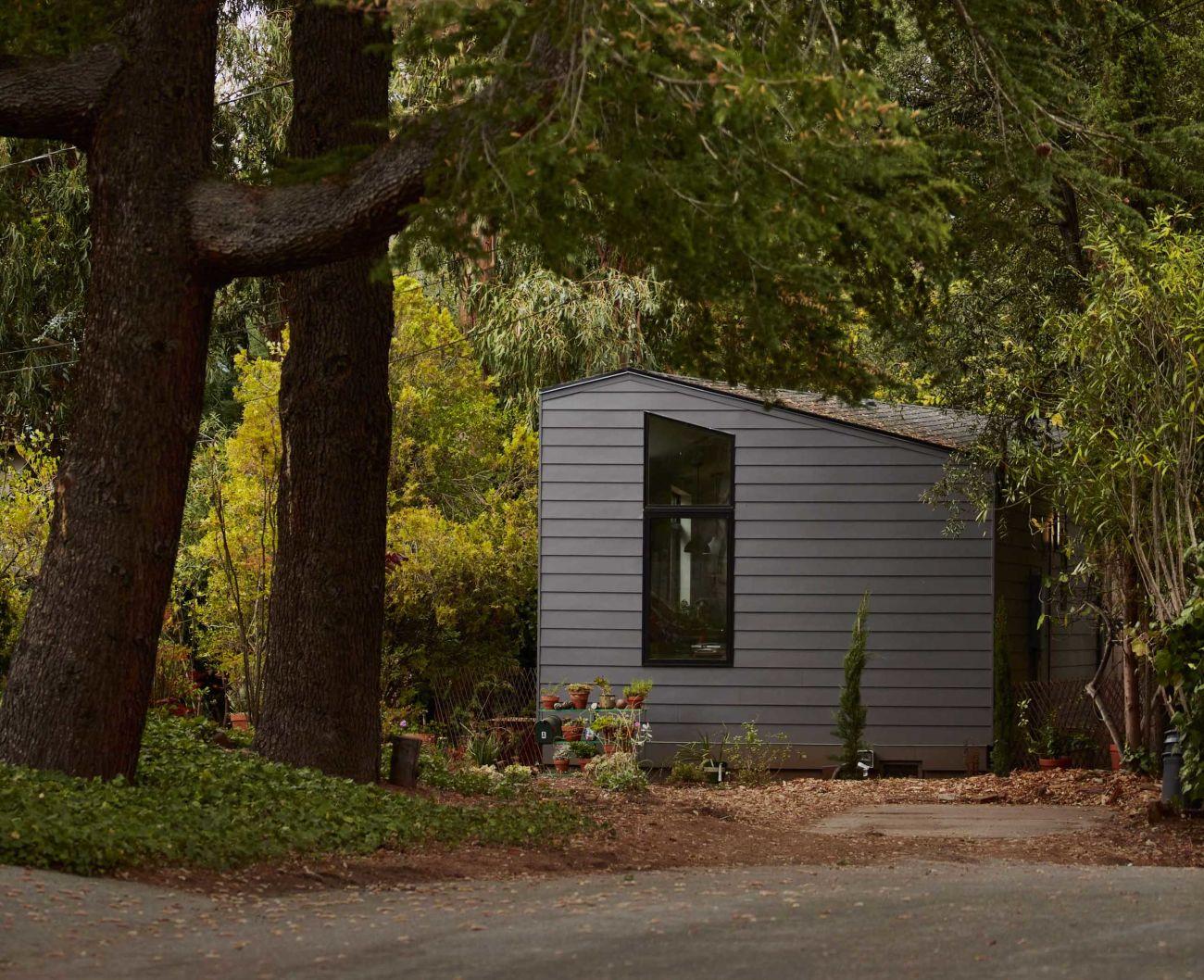
Abodu One in the woods.
Contact Abodu to help you build your ADU in California.

All-in-One Service
Featuring an impressive selection of pre-approved plans, Abodu streamlines the process of building and installing premium built-to-order ADUs.
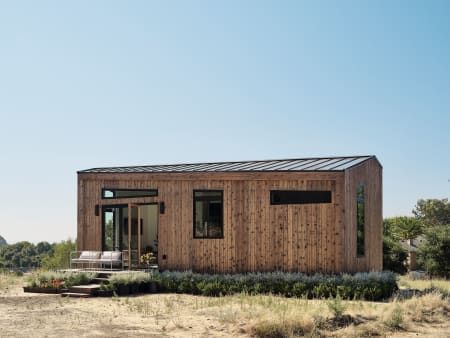
Unparalleled Design
Each floor plan showcases timeless designs using sustainable, high-quality materials—all with upfront pricing.
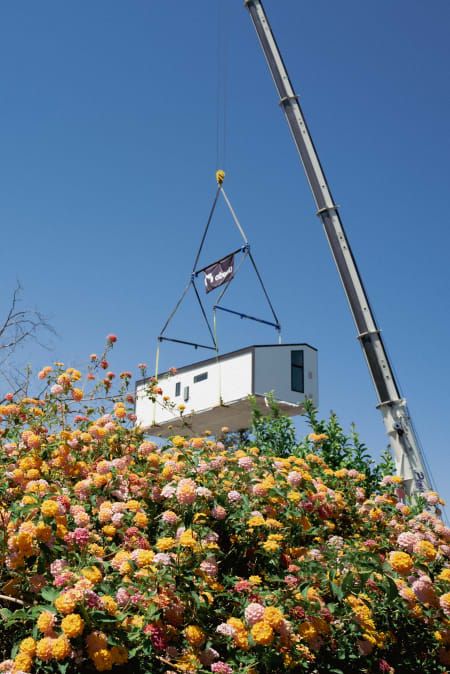
Hassle-Free
We're committed to delivering a straightforward, hassle-free experience including project management, permitting, and construction. Enjoy your Abodu as soon as nine months after signing on the dotted line.
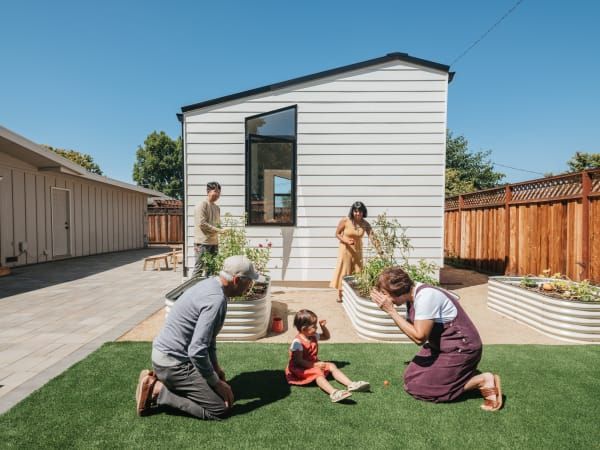
A Great Investment
Take advantage of an exceptional return on investment with an Abodu ADU.
Get your free ADU assessment.
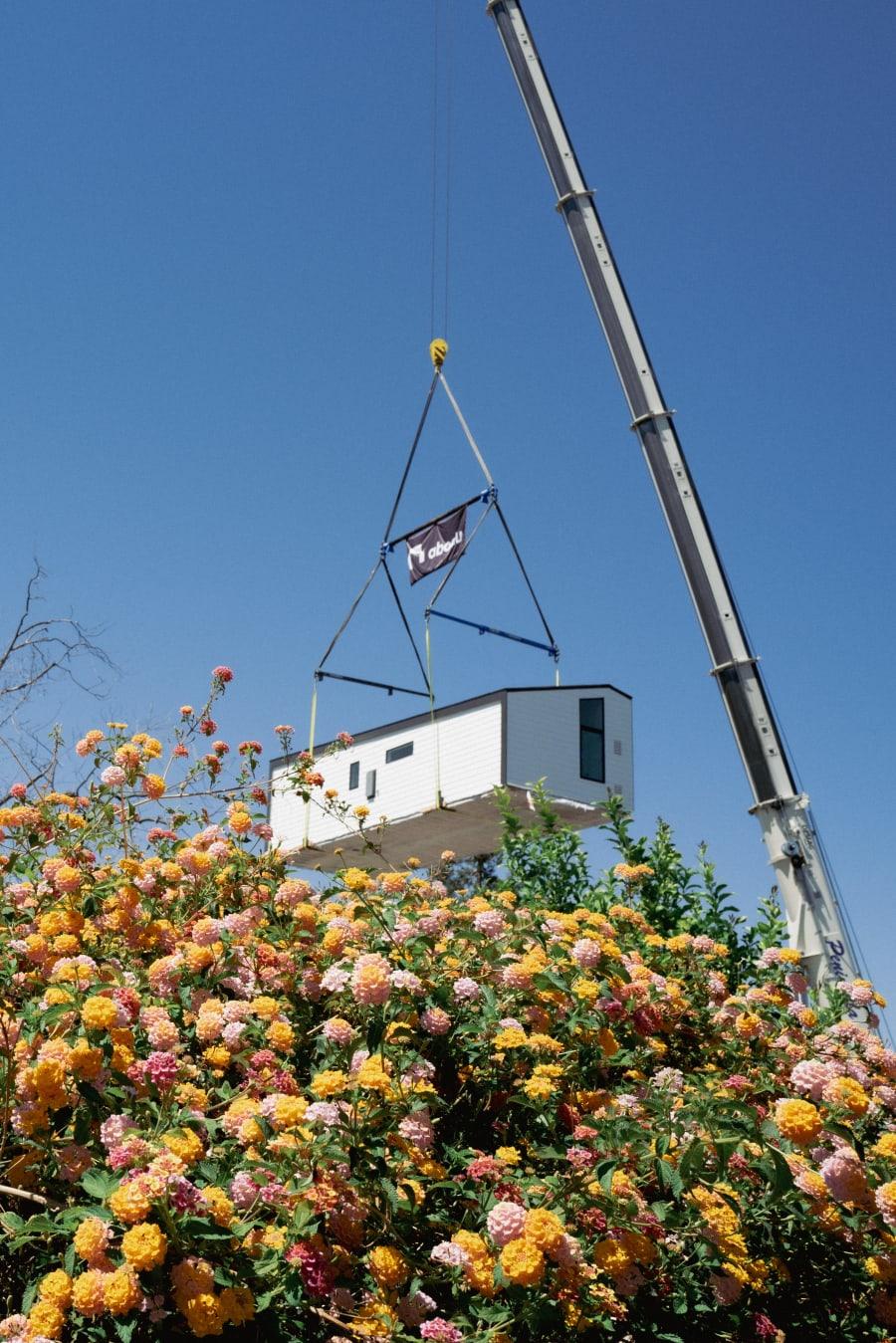
We'll handle the permits.
Delivered in as little as 6 months.
No hassle installation.
Expand your home’s value and livable space.
Find your new Abodu.
